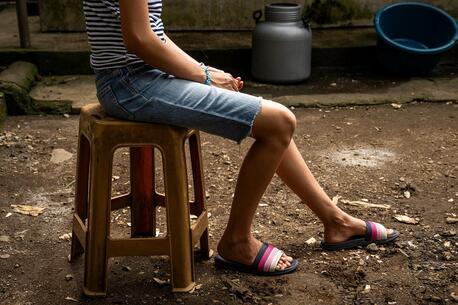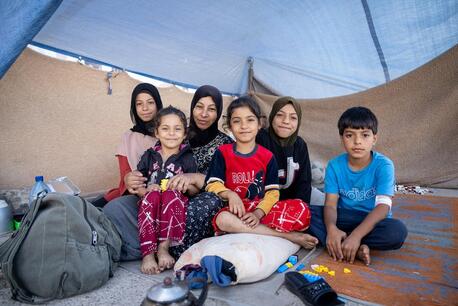ZERO TOLERANCE — End Female Genital Mutilation
FGM is a growing global scourge. According to a new UNICEF report, at least 200 million girls and women have already endured the violent practice.
Take the Pledge: #EndFGM
The number of victims is much higher than previously thought ...
Female genital mutilation is more widespread than ever before — and not limited to Africa, as often believed. Previous estimates counted 130 million victims. New data raises that total to 200 million. The countries with the highest prevalence are Somalia (98 percent) and Guinea (97 percent).
Half of the affected live in three countries, Egypt, Ethiopia and Indonesia. UNICEF estimates that 60 million women and girls have been cut in Indonesia alone.
The practice affects girls and women in every region of the world ...
There is evidence that FGM occurs in India, Malaysia, Saudi Arabia and even in some places in South America. The practice persists in immigrant communities throughout Europe and even in the United States as families bring the custom with them from their countries of origin.
The practice takes many forms ...
FGM differs across regions and cultures, often involving life-threatening health risks. In most countries, the majority of girls were cut before reaching their fifth birthday. In every case, FGM is not just an "old custom"; it is a severe violation of human rights.
© UNICEF SEB-1389/Sebastian Rich
Odmangal C. has performed more than 1,000 FGM procedures on children in Chad. She has never cleaned the blade. She believes doing so would destroy its magic.
UNICEF is co-leading a global fight to stop FGM ...
UNICEF works in partnership with the United Nations Population Fund (UNFPA) on the largest global effort to eliminate the violent practice. UNICEF is working to fight FGM at every level, from advocating on a one-on-one personal level to working within communities and with governments to change health care practices, human rights policies and legislation.
UNICEF also provides medical and psychosocial care for girls who have been harmed and traumatized by mutilation.
Women AND men oppose FGM, even in countries where it is still common ...
Approximately two-thirds of men, women, boys and girls in countries where FGM is common say they want the practice to end — according to UNICEF data. 67 per cent of girls and women and 63 per cent of boys and men oppose the continuation of the practice.
“Although female genital mutilation is associated with gender discrimination, our findings show that the majority of boys and men are actually against it,” said Francesca Moneti, UNICEF Senior Child Protection Specialist. “Unfortunately, individuals’ desire to end FGM is often hidden, and many women and men still believe the practice is needed in order for them to be accepted in their communities.”
The time for ZERO TOLERANCE is now ...
The international community’s commitment to stopping FGM is stronger than ever before. Last year, 193 nations unanimously agreed to a new global target of ending FGM by 2030. Since 2008, five countries have passed legislation criminalizing the practice: Guinea Bissau, Kenya, Uganda and, most recently, Nigeria and the Gambia in 2015.
More than 15,000 communities in 20 countries have publicly declared that they are abandoning the mutilation of female genetalia, including more than 2,000 last year. The majority of people in countries where FGM data exist — including boys and men — think the practice should end.
But if current trends continue, population growth will outpace progress over the next 15 years, and the number of women subjected to FMG will rise dramatically. For those millions of girls who continue to be terrified and hurt, the time for zero tolerance is now.
Read Effie's story, "We still don't talk about it: FGM"
Download the 2016 UNICEF report (pdf)
Watch: Ending FGM in Cote d'Ivoire
Photos in this story by Sebastian Rich for UNICEF.
HOW TO HELP
There are many ways to make a difference
War, famine, poverty, natural disasters — threats to the world's children keep coming. But UNICEF won't stop working to keep children healthy and safe.
UNICEF works in over 190 countries and territories — more places than any other children's organization. UNICEF has the world's largest humanitarian warehouse and, when disaster strikes, can get supplies almost anywhere within 72 hours. Constantly innovating, always advocating for a better world for children, UNICEF works to ensure that every child can grow up healthy, educated, protected and respected.
Would you like to help give all children the opportunity to reach their full potential? There are many ways to get involved.





